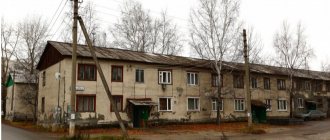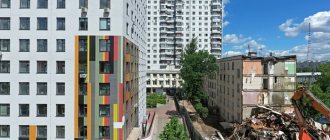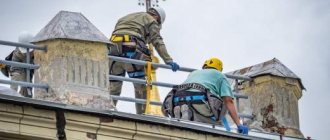2K 2 min.
When forming the budget for the next three years, it is necessary to take into account measures to accelerate the pace of resettlement of emergency housing, Prime Minister Mikhail Mishustin said yesterday at a government meeting. The plan for this year has already been exceeded, but the authorities expect to complete the entire program not in 2024, but in 2023 - to financially support such a pace, the Ministry of Construction proposed to allow regions to receive funds allocated for the implementation of the program until 2024 ahead of schedule. The Prime Minister also announced the allocation of 3 billion rubles. for additional training for citizens who have lost their jobs due to the spread of coronavirus.
Mikhail Mishustin instructed to take into account in the budget the unexpected breakthrough of the regions in the resettlement of emergency housing
Photo: Alexander Miridonov, Kommersant / buy photo
Mikhail Mishustin instructed to take into account in the budget the unexpected breakthrough of the regions in the resettlement of emergency housing
Photo: Alexander Miridonov, Kommersant / buy photo
Returning from the Far East, Prime Minister Mikhail Mishustin held a government meeting the next day. Summing up the results of his trip, he said that he had already prepared instructions for the development of the macro-region and was preparing to present his proposals, formed as a result of the visit, to the president. “First of all, a systematic approach to the development of the Far East is important - it is necessary to solve the long-standing problems of the region, create comfortable conditions for the people who live and work there,” the prime minister explained.
Following his “Far Eastern tour”, Mikhail Mishustin raised the topic of resettling emergency housing - this issue was discussed in Magadan, where the regional governor Sergei Nosov announced his intention to complete the program in 2021, counting on financial support not only from the Housing and Communal Services Fund, but also, for example , Far East Development Fund.
In general, more than 1.3 million square meters are now settled in Russia, as the Prime Minister said. m of emergency housing and more than 85 thousand people, while 34 regions met their targets ahead of schedule.
According to the federal project, 1 million square meters should be resettled this year. m and 54 thousand people - as the head of the Ministry of Construction Vladimir Yakushev previously reported, the resettlement plan in 2021 could be exceeded by one and a half times.
How to love renovation and stay in Khrushchev
Traditionally, the meeting was not without questions on the coronavirus agenda: as the prime minister said, an order was signed to allocate almost 3 billion rubles. to organize retraining for people who are unemployed due to the pandemic. “This is a truly difficult life situation in which state support is simply necessary: it is important to increase the chances of such people so that they can find a good job,” Mikhail Mishustin emphasized. Thus, about 100 thousand people will be able to receive additional education or a more in-demand profession.
Evgenia Kryuchkova
How relocation programs from emergency housing are being implemented in the Moscow region
Almost a million people in the Moscow region need to be relocated from emergency and dilapidated housing. These are those who live in barracks, low-rise buildings built during the war, and Khrushchev-era buildings. Systematic work to improve living conditions in the Moscow region is being carried out within the framework of the national project “Housing and Urban Environment”, the federal project “Ensuring a sustainable reduction of unsuitable housing stock” and investment agreements. Read about the process of providing residents of the region with modern and comfortable apartments in the material of the mosreg.ru portal.
How emergency houses are being resettled in the Moscow region: program terms and requirements for new housing>>
Relocation programs from emergency housing
The emergency pipe was checked using a quadcopter in Dedovsk
Source: Main Directorate of the State Housing Inspectorate of the Moscow Region
The resettlement of residents from dilapidated housing in the Moscow region is carried out within the framework of two programs: the targeted regional program “Resettlement of citizens from dilapidated housing stock in the Moscow region for 2016-2021” and the state program “Resettlement of citizens from dilapidated housing stock in the Moscow region for 2019-2025.” They are financed from the federal budget, the consolidated budget of the Moscow region and municipal budgets.
Until recently, only houses declared unsafe before January 1, 2021 were subject to resettlement. But at the end of September 2021, Russian President Vladimir Putin set the task of accelerating the implementation of the program for the resettlement of emergency housing. In this regard, it should also include houses recognized as unsafe as of January 2021.
Housing stock of the Moscow region: how is the resettlement of emergency housing going?>>
How much emergency housing is there in the region?
An emergency house was demolished in Taldom
Source: Committee for Architecture and Urban Planning of the Moscow Region
According to the press service of the regional Ministry of Construction Complex, at the end of October 2021, the total volume of emergency housing stock in the Moscow region is 14.1 thousand emergency premises with a total area of 628 thousand square meters. These are 1,262 emergency houses in 44 urban districts, where more than 35 thousand people live.
The following urban districts remain anti-leaders in terms of the amount of emergency funds: Shatura (108,315.14 sq. m), Sergiev Posadsky (79,878.59 sq. m), Dmitrovsky (38,117.35 sq. m), Bogorodsky (24,317. 47 sq. m) and Zhukovsky (23,882.50 sq. m). Some of these municipalities are also leaders in the volume of resettlement of residential premises recognized as emergency and included in regional resettlement programs and the national project. Thus, by 2025, it is planned to resettle more than 55 thousand square meters in the Sergiev Posad District. m, in Dmitrovsky - 41.7 thousand sq. m. m, in Shatura - 32.3 thousand sq. m. m.
Resettlement of unsafe houses in the Moscow region: how to achieve relocation from dangerous housing>>
Settlement rate
Two dilapidated houses were demolished in Elektrogorsk
Source: Committee for Architecture and Urban Planning of the Moscow Region
In total, 1.8 thousand people moved to new housing in the Moscow region in 2021, and 2.8 thousand people in 2021. In the period from 2021 to 2025, it is planned to resettle another 385.6 thousand square meters. m in 41 urban districts. During this time, more than 23 thousand people will become owners of modern comfortable apartments.
Since the main request of the region’s residents is to increase the volume and pace of resettlement, the Moscow Region is steadily increasing the pace in this direction. In 2021, 48.5 thousand square meters were resettled. m, in 2021 it is planned to resettle more than 52.2 thousand square meters. m of emergency housing, in 2022 – 68.3 thousand sq. m. m.
Since the beginning of 2021, more than 35.5 thousand square meters have actually been resettled. m of emergency fund. 826 families were able to move into new modern housing – that’s about 2.1 thousand people. By the end of the year, more than 16.5 thousand square meters will be resettled. m of emergency housing, in which about 800 citizens live.
As part of the national project “Housing and Urban Environment”, resettlement in the following municipalities is not provided: Balashikha, Vlasikha, Voskhod, Dzerzhinsky, Dolgoprudny, Domodedovo, Dubna, Star City, Korolev, Kotelniki, Leninsky, Lotoshino, Lytkarino, Molodezhny, Protvino, Reutov, Khimki , Chernogolovka, Shakhovskaya.
Results of the program for the resettlement of emergency housing in the Moscow region in 2020>>
Social rent or property
A house for displaced people from emergency housing will be built in the Dmitrov urban district
Source: Ministry of Construction Complex of the Moscow Region
In the Moscow region, as part of the program for relocation from dilapidated housing, many new apartment buildings are being built; apartments in houses under construction are also being purchased using budget funds and residential premises are being purchased on the secondary market.
If the apartment is in social rent, then a social tenancy agreement for new housing is drawn up with the tenant. He must be provided with residential premises equivalent in total area to those previously occupied. The new housing must be located within the same locality and cannot be less comfortable than the one in which the citizen lived before.
If the residential premises in a dilapidated building are owned, then an exchange agreement can be drawn up with its owner. The law provides for the possibility of providing, by agreement with the owner, another residential premises in place of the seized housing, with its value included in the redemption price. That is, instead of the old apartment, the state can offer residents another one. But if the market value of the offered apartment turns out to be higher than the market value of the seized housing, it will be necessary to pay the difference. Also, the owner of the apartment, when moving out of a dilapidated house, can receive monetary compensation for his existing housing.
Relocation of residents of dilapidated houses in the Moscow region>>
Housing certificate
Source: , website of the administration of the Ruza urban district
In order to speed up the process of moving from emergency housing to comfortable apartments, the Moscow region authorities offer owners to use housing certificates, on the basis of which they can pay for the purchase of new housing at the expense of the state. To obtain a certificate, it is necessary that the house be recognized as unsafe before January 1, 2021, and the ownership of the housing acquired before the house is classified in this category (exception - inheritance). The state buys 1 square meter at a price of 83,963 rubles. The minimum footage is 33.5 square meters, even if the area owned by the owner is actually smaller. Thus, the minimum payment under the certificate will be 2,812,760 rubles. If the living area is greater than the minimum, then the purchase price is based on the actual square footage. For example, the owner of an apartment with an area of 60 square meters will receive a certificate worth just over 5 million rubles. The certificate makes it possible to buy housing in any municipality in the Moscow region. This could be the acquisition of residential premises under a purchase and sale agreement, participation in a shared construction agreement, a mortgage, or an exchange agreement. Certificate funds cannot be cashed out. All transactions are carried out by bank transfer.
You must decide on your desire to receive a certificate before May 1, 2022 and submit an application to the local government authority. The citizen independently chooses the method of implementing the certificate. This must be done within six months of receiving it. Until they move to new housing, the family continues to live in the old apartment. Owners of emergency residential premises have the right not to receive a certificate. In this case, they will have to wait until a relocation house is built in their municipality and only then move to a new apartment.
How to check gas equipment in the Moscow region>>
Renovation program
MKD
Source: Main Directorate of State Construction Supervision of the Moscow Region
To speed up the relocation of citizens to comfortable apartments in the Moscow region, the preparatory stage of a global housing renovation program was launched in the spring of 2021. According to the press service of the regional Ministry of Housing Policy, private investors will be involved in its implementation. In the coming years, modern apartment buildings should appear in place of barracks and dilapidated low-rise housing. At this stage, the Ministry is preparing large packages of documents - master plans, which will describe in detail what the new houses will be like, with what facades, corridors, kitchens and other furnishings.
According to the Minister of Housing Policy of the Moscow Region, Inna Fedotova, it is very important not only to build housing, but also to provide it with social infrastructure. Since this will be off-budget financing, developers will receive orders through competitions and auctions.
“The pilot will start after discussing these issues with residents and taking into account the results of their voting at Dobrodel.” And only after that we will designate some specific territories and put them up for auction,” Fedotova said.
Resettlement of emergency housing in the Moscow region>>
My beloved house has fallen into disrepair
The problem of emergency housing in any region is the same - it is formed faster than new houses for displaced people are found.
The Moscow Region is already completing its second state resettlement program ahead of schedule, eliminating an average of 50 thousand unsuitable square meters annually. But for every 50 thousand “squares” of demolished emergency gangs, 100 thousand new ones appear in the same year. Previously, residents of dilapidated buildings had only one option for solving their housing problems: wait until a new house was built, the apartments in which the developer would give to the displaced. In the far Moscow region, where there are no big problems with land and housing is not so expensive, you can still get an equivalent deal - having given up a two-story barracks building for demolition, the authorities are moving residents to a three-story new building nearby, built with the help of the regional budget and federal programs. In the near zone the area is more difficult. There are barracks there too, but the option to move out of them appears only when the new residential complex has apartments for all the displaced people. And the process always proceeds with difficulty; the developer, burdened with the construction of other social infrastructure, is not always ready to provide apartments for the entire barracks at once.
But now people from dilapidated buildings have another way to solve their housing problem.
Criteria for dilapidation and disrepair of housing
The concept of “emergency housing” is disclosed in the relevant Regulations approved by Decree of the Government of the Russian Federation on January 28, 2006 No. 47.
Among other things, this document contains criteria by which an apartment building can be recognized as an emergency.
- Physical wear and tear and impossibility of reconstruction. All erected structures and buildings wear out over time and lose their operational properties. However, physical wear and tear in itself is not a criterion for recognizing a house as unsafe as such. An apartment building unsuitable for living has significant wear and tear on the floors, foundations and load-bearing walls, combined with the impossibility of carrying out restoration work.
- Damage to a home as a result of a man-made or natural event. If a residential building was damaged as a result of a natural emergency or an explosion, fire, or collapse, a special commission evaluates the possibility of carrying out restoration work. If the latter are impractical, then the apartment building is considered unsafe and subject to demolition.
A house may be considered unsafe even if the physical wear and tear is not so great. The reason for this may be the location of the building in an area that is susceptible to various natural disasters.
In addition to emergency housing, “dilapidated housing” is also highlighted . It should be understood as a multi-unit building with a significant process of wear and tear of the main structural elements of the building (for wooden buildings - 65%, for stone ones - 70%). However, when living in dilapidated housing there is no danger to the life and health of citizens, which distinguishes it from emergency housing.
Demolition of an unsafe residential building - whose responsibility?
According to paragraph 10 of Art. 32 of the Housing Code of the Russian Federation, if an apartment building is recognized as unsafe and subject to demolition or reconstruction, the body that made such a decision may require the owners of the premises in this house to demolish or reconstruct the house.
In practice, owners of residential premises, as a rule, do not demolish apartment buildings at their own expense due to the high cost of this activity.
If the owners do not fulfill the demand within the established period, the land plot on which the house is located, and, accordingly, each room in this house is subject to seizure for municipal needs.
The corresponding decision must be sent to Rosreestr for entering information about the seizure into the Unified State Register of Real Estate (USRN)
.
More details
A special procedure has been established for the demolition of unsafe residential buildings located within the boundaries of a built-up area in respect of which a decision has been made on development in the manner established by urban planning legislation.
In this case, the body that made the decision to recognize such a house as unsafe is obliged to:
- present a demand to the owners of the premises in the specified house for its demolition or reconstruction;
- set a period of at least 6 months for filing an application for a permit for the construction, demolition or reconstruction of the specified house.
If the owner or owners of the apartment building do not submit an application for permission to build, demolish or reconstruct such a house within the established period, the land plot on which the said house is located and the residential premises in the said house are also subject to seizure for municipal needs (clause 11 of article 32 of the Housing Code of the Russian Federation).
Moreover, withdrawal of the land plot in this case before the expiration of the established period is allowed only with the consent of the owner (Clause 12, Article 32 of the Housing Code of the Russian Federation).
What may become the basis for recognizing the property as unsafe and unsuitable for habitation?
The decision to demolish a building is made only by a specially created commission after studying all the submitted documents confirming the emergency condition of the building.
The reason for recognizing the unsuitability of a housing structure may be the following characteristics:
- deformation of the building foundation that cannot be restored or repaired;
- the technical condition of its load-bearing building structures or the building as a whole poses a risk of collapse;
- the resulting tilts can cause a loss of stability of the building;
- lack of communications (electrical wiring, water supply, sewer system);
- disconnecting the house from the central heating system:
- location of apartments in basements without windows;
- the content of toxic substances in the premises is higher than permissible standards;
- ventilation does not work;
- high humidity was recorded in the apartments, as a result of which the walls and ceiling began to become covered with fungus;
- and others, in accordance with the current standards of Regulation No. 47
The procedure for termination of rights in the Unified State Register of Real Estate (USRN)
Ownership of an apartment located in a dilapidated building is terminated in the Unified State Register of Real
based on one of the following documents:
- agreement with the owner of the residential premises on the provision of another residential premises or compensation for the seized apartment (in this case contact Rosreestr
the owner must submit an application for the transfer of rights and the municipality must submit an application for registration of the right; state duty is not paid in this case);
- a judicial act on the seizure of residential premises and termination of ownership rights that has entered into legal force (in this case, municipal authorities have the right to apply to Rosreestr unilaterally).
You may need help with documents. In this case, we recommend using the help of our specialists
!
You may also be interested in:
Demolished or destroyed property: how to properly register it?
State support measures for the purchase of housing
Who will participate in the program?
Participants in the program at the initial stage will be regions that have completed the tasks for resettling emergency housing stock established in the national project “Housing and the Urban Environment” for 2019-2024. Among these regions:
- Sakhalin region;
- Karachay-Cherkessia;
- Saint Petersburg;
- Sevastopol;
- Adygea;
- Dagestan;
- Magadan Region;
- Kabardino-Balkaria;
- Saratov region.
What to do if the house is declared unsafe? More details
In 2022, the Astrakhan and Voronezh regions, Kamchatka and Primorsky territories plan to complete the current program of resettlement of citizens, the press service of the Housing and Communal Sector Reform Assistance Fund told TASS.
Planning and scheduling
In all regions of the country, programs have been developed for the next 2 years of resettlement from residential premises recognized as unsafe, unsuitable for habitation and posing a risk of structural collapse. It is worth noting that, first of all, housing that was recognized as unsafe before 01/01/2017 is demolished, in accordance with the norms of Art. 16 Federal Law No. 185, in force with amendments that have entered into force
from 09.12.2018.
Having such a demolition plan allows local authorities to begin early construction of new houses where people will be relocated. Using the example of the demolition of the so-called “Khrushchev” buildings in Moscow, commissioned in the late 50s and mid-60s of the last century, we see that the program is divided into 2 stages:
- demolition of old houses;
- renovation of existing housing developments.
The main feature of such a program is not just the replacement of old housing, but also the possibility of providing citizens with more comfortable apartments and comfortable conditions. The purchase of new housing for citizens who need to be resettled is carried out through auctions and competitions. As a rule, construction should approach the final stage, that is, at the time of sale the house is at least 70% ready.
Anyone can find out specific information of interest and familiarize themselves with the plan for the demolition of a dilapidated or dilapidated house, with planned activities, by going online to the official portal of the mayor's office (local city council).
What is an “emergency” residential building?
At present, neither the Housing Code of the Russian Federation (LC RF), nor the Regulations “On recognizing premises as residential premises, residential premises unsuitable for habitation, an apartment building in disrepair and subject to demolition or reconstruction, a garden house as a residential building and a residential building as a garden house”, approved (Resolution No. 47) does not provide a clear definition of “emergency residential building”.
At the same time, the said Resolution quite thoroughly defines the grounds for recognizing a residential building as unsafe and subject to demolition or reconstruction.
Therefore, the grounds contained in this regulatory act are applied, including when deciding the issue of recognizing an apartment building in operation as unsafe and subject to demolition.
According to Resolution No. 47, recognition of a residential building as unsafe is possible if:
- its wear is over 70%;
- its sanitary condition does not meet the requirements established in Resolution No. 47;
More detailsThe following cannot serve as a basis for declaring a residential premises unfit for habitation:
lack of a centralized sewerage system and hot water supply in one- and two-story residential buildings;
- the absence in a residential building of more than 5 floors of an elevator and a garbage chute, if this residential building, due to physical wear and tear, is in a limited working condition and is not subject to major repairs and reconstruction;
- inconsistency of the space-planning solution of residential premises and their location with the minimum area of rooms and auxiliary premises of the apartment in an operating residential building, designed and built according to previously valid regulatory documentation, with currently adopted space-planning decisions, if this solution satisfies the ergonomic requirements regarding the placement of the necessary a set of furniture and functional equipment (clause 41 of Resolution No. 47).
In addition, a building is considered subject to demolition if it is technically impossible to correct existing deficiencies. For example, in such a state of the building’s load-bearing structures, when due to their natural wear and tear or external influences they have excessive deformations and damage, have lost their design strength and pose a danger to residents.
More details
Along with the concept of “dilapidated house”, the concept of “dilapidated housing” is used in many regional and municipal programs, judicial acts, as well as in everyday speech. Meanwhile, neither the Housing Code of the Russian Federation nor Resolution No. 47 mentions it and, accordingly, does not define it.
Analysis of law enforcement practice allows us to formulate the concept of the dilapidated state of a building as a condition in which the building structure and the building as a whole are worn out:
- for stone houses - over 70%;
- wooden houses - over 65%;
- houses with walls made of local materials – over 65%;
- attics - over 65%.
At the same time, the main load-bearing structures of the building retain strength sufficient to ensure the stability of the building, however, the building itself ceases to meet the specified operational requirements (including “Methodological recommendations for protecting the rights of participants in the reconstruction of residential buildings of various forms of ownership” (approved), Order of Rosstat dated August 15, 2016 No. 427 “On approval of statistical tools for organizing federal statistical monitoring of construction, investments in non-financial assets...”).
Thus, dilapidated housing is characterized by a high degree of wear and tear of its structures without the danger of their collapse and, accordingly, does not pose a danger to life, and emergency housing has deformations and damage to the load-bearing structures, so that living in this residential premises is life-threatening due to the real possibility of collapse.
If the house is not recognized as dilapidated, but the residents cannot live due to unsuitable living conditions
If residents do not know whether their home is participating in a relocation program, the first step is to find out if this is the case. To do this, you can submit an official request to the municipal administration or obtain information on the Housing and Communal Services Reform website.
If the house does not participate in the program, then residents must do the following:
- Submit a collective application to the municipality to recognize the house as unsafe.
- Wait for the formation of an interdepartmental commission.
- Wait for the conclusion of the interdepartmental commission.
At this stage, the house may be considered either dilapidated or in disrepair. In the first case, residents have the right to count on major repairs (with a possible temporary move to a flexible building). If the housing is recognized as unsafe, then the residents are given an approximate time frame for relocation, after which the house is included in the appropriate register.
If residents do not agree with the decision of the interdepartmental commission, then they have the right to challenge it in court. However, to do this, it is first necessary to conduct an independent examination that will confirm the tenants’ arguments.
Citizens who are owners have the right to expect compensation instead of providing housing. To do this, they need to send a corresponding application to the municipality, which is considered within 5 days. If the decision is positive, then an agreement on the transfer of property is concluded with the municipality, after which the person leaves the apartment and receives compensation to a bank account.
Attention! Tenants are required to provide confirmation of the number of family members before moving in. During the period of relocation, a new social rental agreement is concluded between the municipality and the tenant, on the basis of which it is possible to live in the new living space.
The procedure for recognizing a residential building as unsafe
Current legislation provides for a special procedure for declaring residential premises unfit for habitation.
According to Resolution No. 47, the recognition of an apartment building as unsafe and subject to demolition or reconstruction is carried out by an interdepartmental commission specially created for these purposes.
Moreover, the solution to this issue is the exclusive competence of this commission and is not within the powers of even the judicial authorities.
More details
You can appeal to the judicial authorities only the decisions of the specified interdepartmental commissions on issues related to the recognition of a residential premises as suitable (unsuitable) for living and an apartment building as unsafe and subject to demolition, or the inaction of the authorities in making these decisions.
The basis for starting the work of the interdepartmental commission may be:
- statement from the owner of the premises;
- application from a citizen (employer);
- conclusion of bodies authorized to conduct state control and supervision on issues within their competence (clause 42 of Resolution No. 47).
Based on the results of consideration of the above application, the commission makes one of the following decisions:
- on identifying the grounds for recognizing an apartment building (AMD) as unsafe and subject to reconstruction;
- on identifying the grounds for recognizing the apartment building as unsafe and subject to demolition;
- about the absence of grounds for recognizing the apartment building as unsafe and subject to demolition or reconstruction.
Based on the received conclusion of the commission on identifying the grounds for recognizing the apartment building as emergency, local government bodies
within 30 days, they make a decision to recognize the apartment building as unsafe and subject to demolition or reconstruction and issue an order indicating the methods of further use of the premises and the timing of the resettlement of citizens.
The owners of residential premises in an emergency apartment building are sent a notice of the decision made to confiscate their residential premises, as well as a draft agreement on the confiscation of real estate
for state or municipal needs in the manner and within the time limits established by law (Part 4 of Article 32 of the Housing Code of the Russian Federation).
If the owner has not entered into an agreement on the seizure of real estate for state or municipal needs, including due to disagreement with the decision to seize residential premises from him, a state authority or local government body
who have made such a decision can file a claim in court for the forced seizure of residential premises (Part 9 of Article 32 of the Housing Code of the Russian Federation).
Forced seizure of residential premises on the basis of a court decision is possible only subject to preliminary and equivalent compensation. At the same time, at the request of the previous owner of the residential premises, he retains the right to use this premises, if he does not own other residential premises, for a period of no more than 6 months after the provision of compensation to him, unless otherwise established by an agreement with him (Part 1). 6, Article 32 of the Housing Code of the Russian Federation).
More details
The owner of a residential premises subject to seizure, prior to the conclusion of an agreement on the seizure of real estate for state or municipal needs or the entry into force of a court decision on the forced seizure of such real estate, may own, use and dispose of it at his own discretion and make the necessary expenses to ensure the use of the residential property. premises in accordance with its purpose (part 5 of article 32 of the Housing Code of the Russian Federation).
Arbitrage practice:
Established judicial practice indicates that the established procedure is also applicable in relation to private residential buildings owned by citizens by right of ownership, since the legislator does not provide for any other procedure for inspecting private residential buildings in order to recognize them as suitable or unsuitable for citizens to live in (Review of judicial practice, approved Presidium of the Supreme Court of the Russian Federation dated April 29, 2014).
Of significant importance for the exercise of rights when recognizing a residential building as unsafe and subject to demolition is the fact whether the person is the owner of the residential premises in it or uses the premises under a social tenancy agreement.








